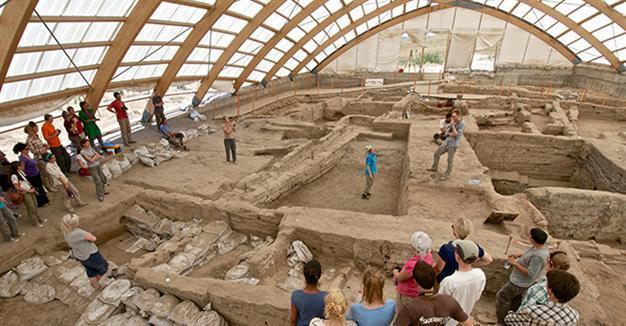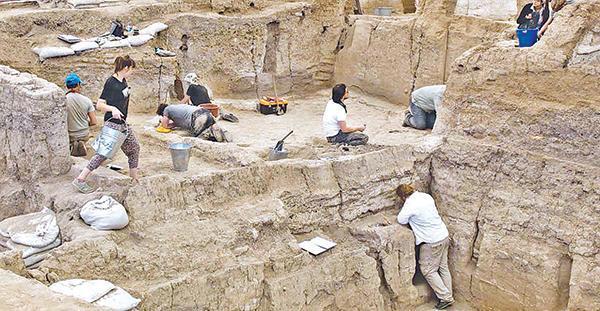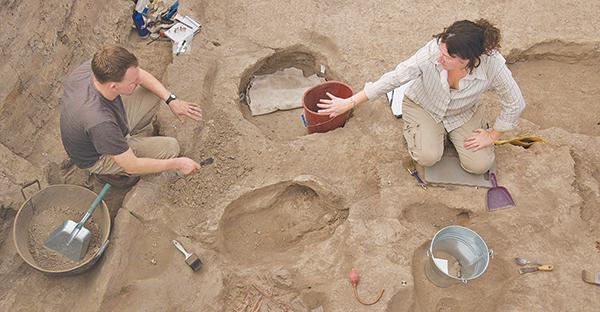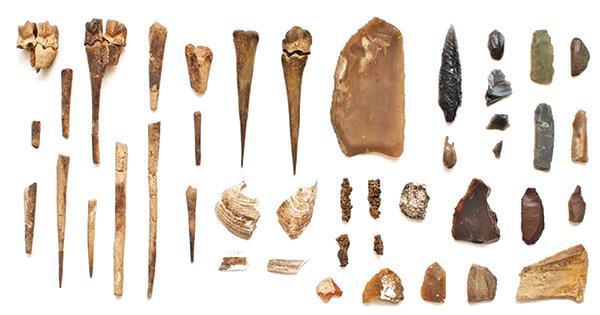New findings at Çatalhöyük
KONYA – Doğan News Agency
 Çatalhöyük, the 9,000-year-old settlement in the central Anatolian province of Konya’s Çumra district, once again amazed archaeologists with new findings in 2015, the most important of which was a rare human face-like plastered head.
Çatalhöyük, the 9,000-year-old settlement in the central Anatolian province of Konya’s Çumra district, once again amazed archaeologists with new findings in 2015, the most important of which was a rare human face-like plastered head. Çatalhöyük was discovered in 1958 by archaeologist James Mellaart and excavations were carried out between 1961 and 1963 and then again in 1965.
After a long break, work at the site resumed in 1993 and has been carried out by Prof. Ian Hodder of Standford University.
Last year, excavations started in June and ended in August. The results of the work were published online via a website, www.catalhoyuk.com.

Providing information about the last year’s excavations in the Çatalhöyük 2015 archive report, which can be reached online, Hodder said they had unearthed very remarkable finds and among them the most important was a plastered-head with obsidian eyes.
“[In] Building 132 [B.132] a head was found that had been modeled in plaster, painted and had obsidian eyes inserted. While a Neolithic statue with obsidian eyes has been found in Şanlıurfa, parallels for the Building 132 head are rare. The head was multiply replastered, and in some of the replasterings the obsidian eyes were replaced with black paint. The head was originally attached to the wall of B.132, above and looking into or watching over the entrance into the side storage room. It is tempting to interpret the head and its obsidian eyes as monitoring the movement of stores into and out of the side room. It is not possible to easily determine whether the head represents a human or [an] animal. When viewed face on, many observers see resemblances to a feline or bear, but when viewed from the side, the head has the type of nose and chin seen on anthropomorphic figurines,” said Hodder.
In the report, Hodder said, a stone figurine was also found in the area.
“The figurine ranks with the best that have ever been found at the site. As in many examples, the head was removed at some time before deposition, but the body is well formed. While the new figurine emphasizes legs and buttocks, it also has a very marked pubic triangle, although the central vertical line is less carefully executed than the rest of the figurine. The fact that such figurines tend to occur more commonly in the upper levels of the site fits in with other evidence of social changes that emphasize domestic production rather than rituals associated with wild animals,” the professor said.

Unmanned aerial vehicles
Stating that Çatalhöyük was also photographed with unmanned aerial vehicles, Hodder said, “During the 2015 field season the UC Merced team performed a 3D digital mapping of the landscape of Çatalhöyük and its environs with the goal of providing further understanding of the site’s relationship with other Neolithic settlements in the Konya Plain. Multiple drone flights were conducted to perform low altitude aerial photographic surveys of the landscape and waterways in proximity to Çatalhöyük and Boncuklu Höyük.

















